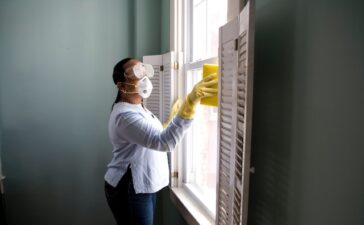Looking to add a touch of creativity and durability to your projects? Look no further than JR Epoxy Resin! With its versatility and strength, this innovative material has become a favorite among DIY enthusiasts and professionals alike. In this blog post, we will delve into the world of JR Epoxy Resin, exploring the different types available, their uses, benefits, and how to choose the right one for your project. So grab a cup of coffee and let’s uncover the endless possibilities that come with using JR Epoxy Resin!
The Different Types of JR Epoxy Resin
When it comes to JR Epoxy Resin, there are various types available for different projects. One type is the standard epoxy resin, known for its versatility and durability. It’s ideal for a wide range of applications, from art projects to industrial uses. Another type is the UV-resistant epoxy resin, which offers protection against sunlight exposure and yellowing over time.
For those looking for a faster curing option, there’s rapid-set epoxy resin that dries quickly and efficiently. On the other hand, high-temperature epoxy resin can withstand extreme heat conditions without losing its strength or integrity. Specialty epoxies like casting resin are perfect for creating intricate designs or encapsulating objects.
Each type of JR Epoxy Resin has unique properties that cater to specific project requirements. By understanding the differences between them, you can choose the best one suited to your needs.Get more details visit justresin.com.au
Uses and Benefits of Each Type
When it comes to JR Epoxy Resin, there are various types available, each with its own unique uses and benefits. One popular type is the clear epoxy resin, which is ideal for creating stunning tabletops, jewelry, and art pieces due to its crystal-clear finish that enhances colors and textures.
Another type is the casting epoxy resin, perfect for pouring into molds for creating intricate designs like coasters or decorative items. Its self-leveling properties make it easy to achieve smooth surfaces every time.
For projects requiring a high heat resistance, heat-resistant epoxy resin is the way to go. This type can withstand extreme temperatures without yellowing or warping, making it suitable for applications like kitchen countertops or outdoor furniture.
Additionally, UV-resistant epoxy resin is excellent for projects exposed to sunlight as it prevents yellowing and degradation over time. It’s an ideal choice for outdoor installations or artworks displayed in well-lit areas.
No matter the project at hand, there’s a specific type of JR Epoxy Resin tailored to meet your needs and bring your creative visions to life effortlessly.
Factors to Consider When Choosing the Right Type for Your Project
When selecting the right type of JR epoxy resin for your project, there are several key factors to consider. First and foremost, think about the specific requirements of your project – whether it’s for casting, coating, laminating, or another application. Understanding the purpose will help you narrow down the options.
Next, consider the curing time of the epoxy resin. Some types cure quickly while others take longer to set. This factor is crucial depending on your timeline and how soon you need the project completed.
Another important consideration is the viscosity of the epoxy resin. Thicker viscosities work well for vertical applications, while thinner ones are better suited for pouring and filling molds.
Additionally, take into account any special properties needed for your project such as UV resistance, heat resistance, or flexibility. These characteristics can impact how well the epoxy performs in different environments.
Always check compatibility with other materials you’ll be using alongside the epoxy resin to ensure a successful outcome for your project.
Common Mistakes to Avoid When Using JR Epoxy Resin
When working with JR Epoxy Resin, it’s important to avoid common mistakes that could compromise the quality of your project. One common error is not properly measuring the resin and hardener ratios, which can result in an incomplete curing process and a sticky finish. Another mistake to steer clear of is failing to mix the components thoroughly, leading to uneven consistency and potential weak spots in your final product.
Additionally, overlooking proper surface preparation before applying the epoxy resin can cause adhesion issues and bubbling. Rushing through the curing process or exposing the resin to extreme temperatures too soon can also lead to cracking or warping. Neglecting safety precautions like wearing protective gear and ensuring proper ventilation while working with epoxy resin can pose health risks.
By being mindful of these common pitfalls, you can achieve successful outcomes when using JR Epoxy Resin for your projects.
The Benefits of Using JR Epoxy Resin in Various Projects
When it comes to choosing the right type of JR Epoxy Resin for your project, it’s essential to consider the specific requirements and characteristics of each variant. By understanding the differences between them and their intended uses, you can make an informed decision that will ensure the success of your project.
Remember to avoid common mistakes such as improper mixing ratios or inadequate surface preparation when working with JR Epoxy Resin. Taking these precautions can help you achieve optimal results and prevent costly errors in your projects.
Utilizing JR Epoxy Resin offers a wide range of benefits across various industries and applications. Whether you’re looking for strength, durability, or aesthetic appeal, there is a suitable epoxy resin type available for your specific needs. By selecting the right product and following best practices in its application, you can unlock the full potential of JR Epoxy Resin in enhancing the quality and longevity of your projects.





